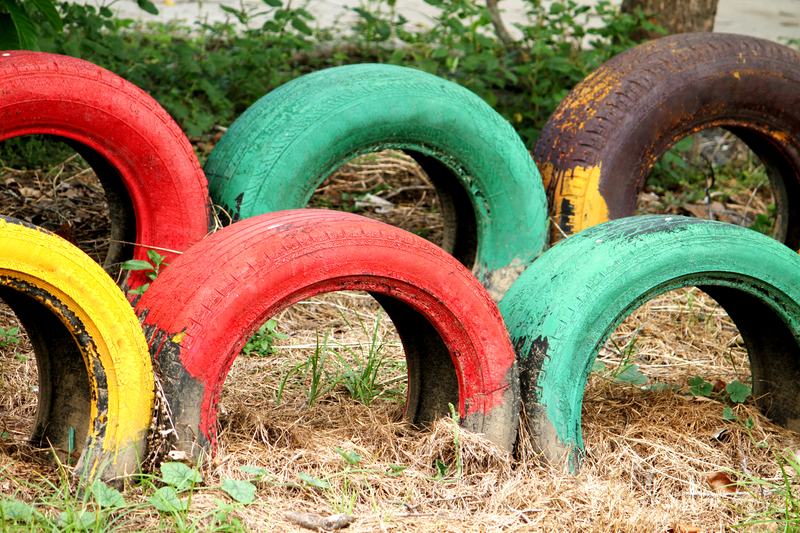Eco-Friendly Methods to Dispose of Used PPE
In the wake of global health crises, personal protective equipment (PPE) such as masks, gloves, gowns, and face shields have become everyday essentials. While these protective items keep us safe, a growing concern has emerged over their environmental impact. Improper disposal of used PPE clogs landfills, pollutes oceans, and harms wildlife. This guide offers comprehensive, eco-friendly methods to dispose of used PPE and move towards a more sustainable future.
Why Is Eco-Friendly PPE Disposal Important?
Since the onset of the COVID-19 pandemic, billions of single-use PPE items have been used and discarded. Most of these products are made of plastic polymers, which can take centuries to decompose. PPE pollution leads to:
- Soil and water contamination from microplastics
- Threats to marine and terrestrial wildlife
- An increase in greenhouse gas emissions from incineration
- Obstructed sewer systems in urban areas

Understanding Different Types of PPE Waste
Before exploring eco-friendly PPE disposal methods, it helps to categorize PPE waste:
- Single-use masks: Most often made of polypropylene plastic.
- Gloves: Latex, nitrile, and vinyl gloves are all common types.
- Disposable gowns and aprons: Usually plastic or polyethylene based.
- Face shields and goggles: Manufactured from hard plastics.
- Reusable PPE: Can be cleaned and reused multiple times before disposal.
Eco-Friendly Methods to Dispose of Used PPE
1. PPE Recycling Programs
One of the most promising sustainable PPE disposal solutions is recycling. Many components in masks and gloves are recyclable, but they require specialized handling due to potential contamination.
- Find local PPE recycling booths or programs: Companies like Terracycle partner with organizations to collect, sanitize, and recycle used PPE.
- Contact local waste authorities: Some municipalities have introduced PPE-specific recycling bins at public spaces or healthcare facilities.
- Hospital waste segregation: Healthcare facilities often have strict waste streams for PPE and should follow regulated recycling protocols.
*Note: Recycling PPE at home can be risky due to contamination. Always use programs designed specifically for this purpose.*
2. Non-Incineration Treatment Technologies
Traditional PPE disposal methods like incineration release toxic chemicals into the atmosphere. Modern, eco-friendly technologies are emerging as superior alternatives:
- Autoclaving: High-pressure steam sterilizes PPE waste, allowing it to be processed as regular non-hazardous waste or recycled.
- Microwave Disinfection: Exposes contaminated PPE to microwaves, killing pathogens without harmful emissions.
- Chemical Disinfection: Uses environmentally safe chemicals to sterilize PPE before further processing.
Benefits: These eco-friendly PPE disposal methods convert hazardous waste into safe materials, suitable for recycling or traditional waste management, reducing environmental contamination.
3. Upcycling and Repurposing PPE Materials
Creative thinkers and artists are finding ways to repurpose used PPE into new products. Such innovative approaches not only minimize waste but also raise public awareness.
- Construction materials: Shredded masks and gowns can be turned into building blocks or asphalt fillers.
- Art and fashion: Cleaned and sanitized PPE is being upcycled into art installations, bags, or eco-friendly apparel.
- Outdoor furniture: Some companies have reused PPE plastics to manufacture benches and playground equipment.
Ensure any PPE used for upcycling is thoroughly cleaned and disinfected to protect public health.
4. Compostable and Biodegradable PPE Alternatives
One of the best environmentally friendly PPE disposal solutions is to minimize the problem from the start. Eco-conscious manufacturers now offer:
- Bamboo or cotton masks: Can be composted after use, breaking down safely in soil.
- Biodegradable gloves: Made from plant-based bioplastics or cornstarch, decomposing within months.
- Reusable face shields and gowns: Designed for multiple uses and eventual responsible disposal.
Switching to these alternatives makes PPE waste management much easier and greener.
5. Safe PPE Collection Bins and Drop-Off Points
Setting up dedicated PPE collection points prevents litter and facilitates sustainable disposal.
- Contactless drop-off bins: Strategically placed in hospitals, offices, and public buildings for staff and visitor convenience.
- Labeling and color-coding: Ensure bins are clearly marked for used PPE to avoid cross-contamination.
- Regular sanitization and collection: Reduces health risks and boosts the safety of downstream processing.
6. Education and Community Initiatives
Encouraging the widespread adoption of eco-friendly PPE disposal methods starts with education.
- Schools, workplaces, and healthcare facilities can hold awareness campaigns about correct PPE disposal and available recycling solutions.
- Community clean-up events targeting improperly disposed PPE can make a visible difference and foster collective responsibility.
- Sharing tips on social media helps spread knowledge about sustainable PPE handling.
An informed public is far less likely to engage in harmful disposal habits.
7. Partnering with Accredited PPE Waste Processors
For large organizations and healthcare institutions, collaborating with licensed waste management companies ensures adherence to environmental and health regulations.
- Audit waste streams to identify the volume and types of PPE being disposed.
- Choose processors certified in sustainable or circular economy practices.
- Review reporting procedures to ensure PPE is being handled responsibly from collection to final disposal or recycling.
Best Practices for Individuals
Even individual efforts contribute significantly to eco-friendly PPE waste solutions. Here's what you can do:
- Opt for reusable PPE such as washable masks and face shields.
- Follow proper mask disposal steps--cut the ear loops to protect wildlife and drop used PPE into designated bins.
- Don't flush PPE down toilets--it clogs sanitation systems and pollutes water bodies.
- Keep used PPE in a closed, labeled bag until you can deposit it in an appropriate collection site.
- Wash hands thoroughly after handling used PPE.
Sustainable PPE Innovations: A Brighter Future
Modern research continues to bring innovations that may soon make eco-friendly PPE disposal easier than ever:
- Self-sanitizing masks that last longer and reduce waste
- Modular PPE designs for easy disassembly and recycling
- Biodegradable coatings and improved compostability
Various universities and companies worldwide are piloting systems to convert used PPE into energy, new materials, or even turning mask waste into filament for 3D printing. These sustainable PPE initiatives point towards a cleaner, greener future for essential public health equipment.
Global Initiatives for Eco-Friendly PPE Disposal
Countries and organizations have taken major steps towards reducing the environmental footprint of PPE waste:
- UK NHS: Implemented circular economy pilot programs for disposable gowns and masks.
- UNEP: Issues global guidelines for safer, more sustainable COVID-19 waste management.
- WHO: Recommends minimal use of single-use PPE and prioritizing reusable alternatives where feasible.
- India and Kenya: Community-driven mask collection and recycling projects are showing promising results.
These examples demonstrate that collective responsibility and innovation can mitigate the environmental impact of PPE waste successfully.

Frequently Asked Questions about Eco-Friendly PPE Disposal
Can you recycle disposable masks and gloves?
Many disposable masks and gloves can't be recycled through conventional household streams due to contamination risks. However, specialized PPE recycling programs--often provided by local authorities or private companies--can process and recycle these items safely.
What is the most sustainable PPE disposal method for households?
The most eco-friendly option for households is to switch to reusable PPE when possible. If disposable PPE is necessary, collect it securely and search for a PPE recycling drop-off or collection site. Never litter or flush PPE.
Are biodegradable masks better for the environment?
Yes, biodegradable masks are made from materials that break down safely in the compost, leaving no lasting pollution. Whenever available, opt for certified biodegradable PPE to minimize your environmental impact.
How can workplaces promote sustainable PPE disposal?
Employers can install marked PPE recycling bins, procure environmentally friendly PPE supplies, run educational campaigns, and partner with licensed waste companies to ensure responsible handling of used PPE.
Conclusion: Embrace Eco-Friendly PPE Waste Solutions Today
Responsible PPE disposal is crucial in safeguarding both public health and the planet. The shift towards eco-friendly methods to dispose of used PPE combines community action, individual responsibility, technological innovation, and regulatory support. By prioritizing sustainable PPE disposal--through recycling, adoption of biodegradable products, and upcycling--we can reduce pollution and work towards a healthier, cleaner world.
Let's all do our part to ensure that our protective choices today don't harm the environment tomorrow.
- Choose sustainable PPE options when possible
- Participate in community and institutional PPE recycling programs
- Educate others on safe and eco-friendly PPE waste management
Every mask, glove, and gown disposed of responsibly is a step toward healing our planet. Start making sustainable PPE choices today!